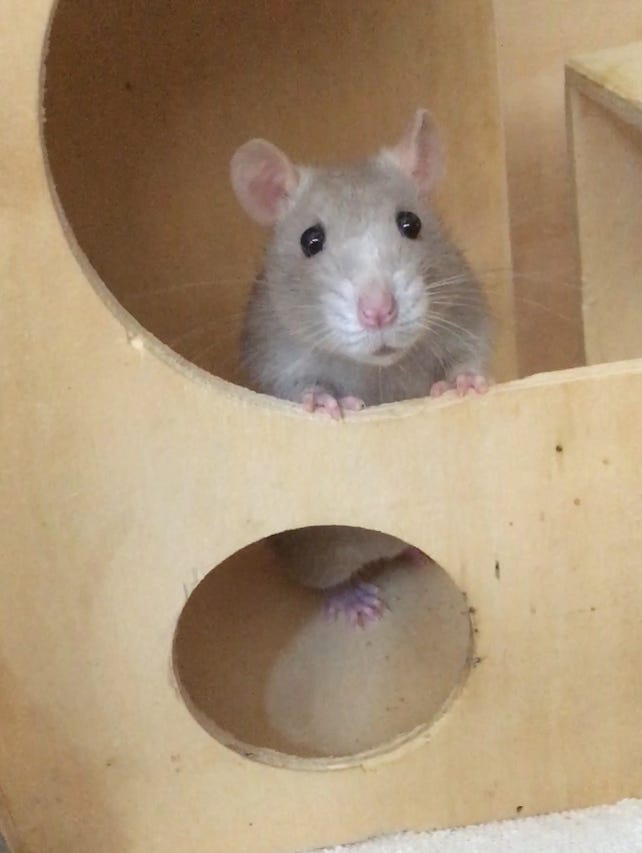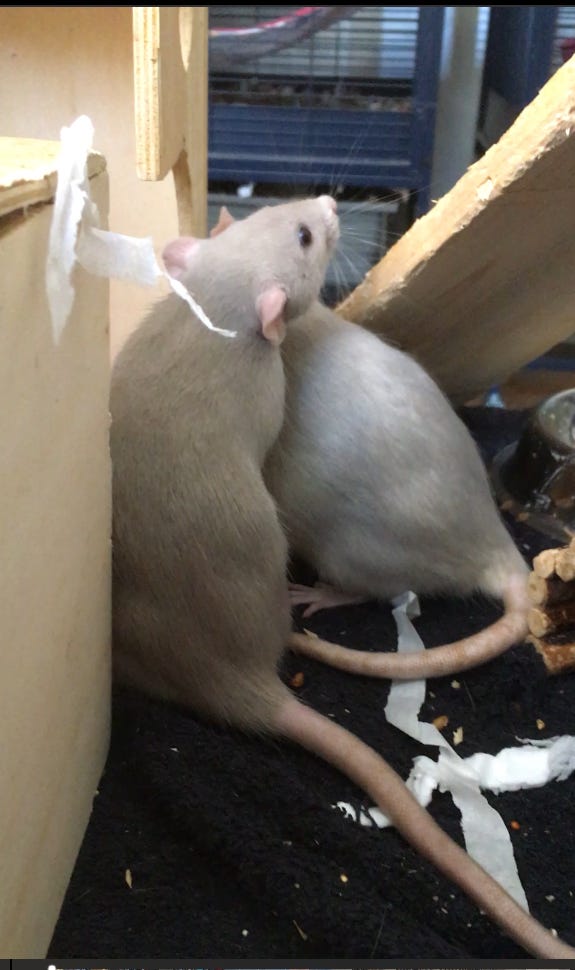Rats may be the most adaptable creatures on the planet. They’ve survived mass extinction events that wiped out almost every other mammal, honed an extraordinary sense of smell that allows them to find food in a wasteland, can swim (sometimes for days) if necessary, and manage to reproduce large litters inside a few weeks. 1
Rats don’t just evolve but have “evolutionary bursts.” Gene sequences in rats change faster than we once believed was possible in mammals, creating an accelerated evolution2. Next time you are wondering how wild rats can eat poison that would knock out an elephant, consider that they may have simply adapted to it. The poison is no longer poison to them. It has become food.
Rats also learn quickly. Though they are normally most active in the early mornings and evenings, wild rats will change their foraging behaviour in order to avoid foxes and other predators that hunt at these same hours.3 However, their super adaptation is only true for rats as a species, not for individual rats. In the wild, individual rats suffer in the heat, freeze in the cold, die of infections after traumatic amputations from traps and from new poisons. They are eaten by predators on the ground, and disemboweled from those that fly overhead. Despite how quickly they learn and adapt, the average lifespan of a wild rat is only 6.2-11.3 months.4
As for pet rats, they can become ill quickly and fatally. But because they don’t live quite as perilous an existence, their lifespan is about 24 to 30 months. Of course, that is an average. Some rats won’t make their second birthday while others will hit 36 months or more.
Despite superficial physical differences like fur colour or ear set, pet rats aren’t that different to wild rats. Pet rats want to roam, forage, dig, form social groups and reproduce. Like their wild counterparts, they avoid bright lights, exposure to large uncovered spaces, and are wary of anything hovering from above.
Pet rats will endure all sorts of conditions, but nobody gets pets so that the animals can simply endure. We want to provide an environment in which they flourish and within which we can become an integral part of their happiness.
I toil daily with the ethics of breeding such smart, active, sensitive animals because keeping them in the numbers required to maintain a minimally diverse gene pool (16-20 adults). This means I’m constantly putting rats back into cages when they’d prefer to be out and about exploring, or putting down rats that want me to pick them up.
Nonetheless, I try.
In order to provide my breeding rats with anything like the standards of care they should receive in a pet home, I have to schedule my time, and ensure I have all the necessary provisions for them. You’ll get much more detail elsewhere in All About Rats, but to start with, every rat I have requires very large, well-furnished cage, a group of rat friends, a species appropriate diet of quality ingredients that includes daily fresh vegetables, cooked bones given weekly, opportunities to practice natural foraging behaviour, such as digging, and a lot of time out of the cage to roam in a larger space. Plus, time with me, who they bond with quite closely.
Every morning, my rats have a breakfast of washed salad leaves, the darker the better, and usually some kale. I then begin a rotation for different groups to play outside their cages: first of bucks, then of does, then another of bucks, and so on. I have some tea, and sit quietly with the first group, playing with them and checking them over casually to make sure they are all in good health. Early mornings are my favourite time of day, and my favourite time with my rats. They bring a joyful energy to the day and with nothing else urgently requiring my attention, I can curl up with a steaming cup of tea, and let them come to me, or watch them climb on the tables of obstacles and tubes and toys provided.
Rats are wonderfully active in the early mornings and evenings and they can’t wait to come out of their cages. After a few cups of tea, I let the ones I trust hang out on their own while I go elsewhere to do some writing. When I swap them over, I’ll make sure that any larger groups (and the most intrepid) are loosely supervised while I tidy the cages, change the litter boxes, replace any wet or soiled hammocks, and ensure the corners are kept dry and clean.
I play with the rats while I do all these easy chores and I do my best to give each attention. But there is only so much of me available for 16-20 rats.
This process takes about two hours and is repeated in the evenings during which I’ll catch up on cleaning cages that I didn’t get a chance to clean well enough in the morning, and make sure to change the water bottles and the bottles of water mixed with vitamins.
Every one of my rats would rather I spend all those hours exclusively with them. So, even though I’m doing the best job I can, I always feel a bit guilty, and am even now trying to devise additional ways in which my rats can safely exercise more of their curiosity outside the cages. Meanwhile, if you come around my house, don’t be surprised to see a rat or two on the table.
Thybert, D. (2018) Rodents are awesome: Extreme evolution, Earlham Institute. Available at: https://www.earlham.ac.uk/articles/rodents-are-awesome-extreme-evolution (Accessed: 14 July 2024).
Bickerton, P. (2018) Retrodents: A transposon-driven burst of evolution in mice, Earlham Institute. Available at: https://www.earlham.ac.uk/articles/retrodents-transposon-driven-burst-evolution-mice (Accessed: 14 July 2024).
Lambert, M.S. et al. (2008) ‘The effect of habitat management on home‐range size and survival of rural Norway rat populations’, Journal of Applied Ecology, 45(6), pp. 1753–1761. doi:10.1111/j.1365-2664.2008.01543.x.
Royer, N. (2000) American Fancy Rat & Mouse Association. Available at: https://www.afrma.org/ (Accessed: 14 July 2024).







